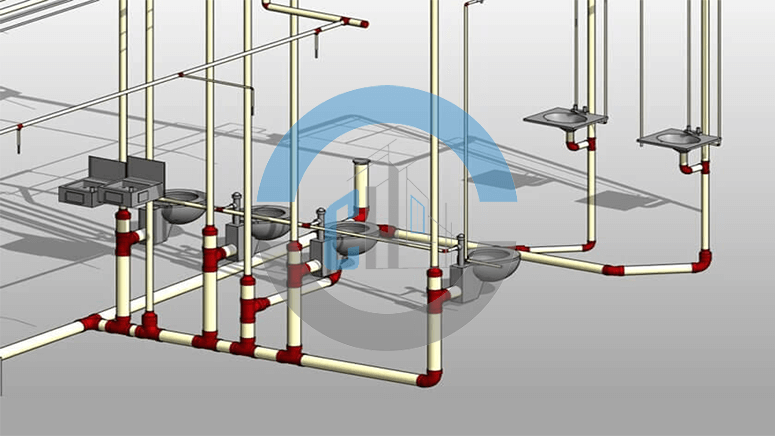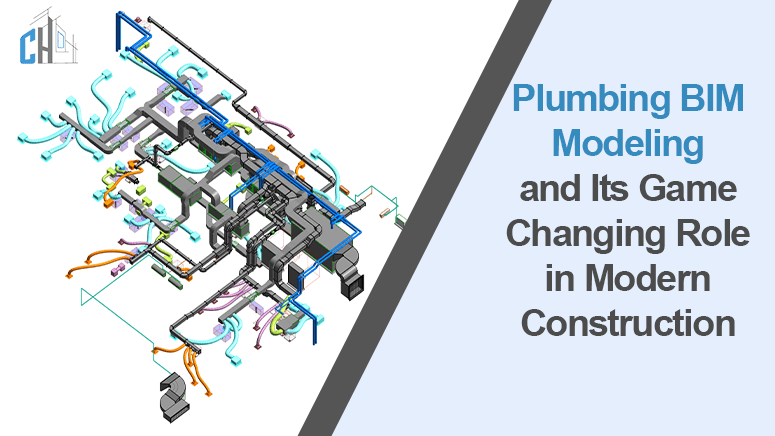Quick summary: Plumbing BIM Modeling is among the most transformative technologies within the construction market. It has revolutionalised the ways in which architectural and engineering projects are planned and implemented. This shift is spearheaded by BIM – Building Information Modeling, which is a digital model of a facility, launched in order to support decisions made through the lifecycle of a project.
This has completely changed the way construction professionals work together and how information generated throughout design, construction and even demolition phases is share.
Therefore, the question as to why BIM is crucial today’s construction setting arises. In other words, it has more accuracy and synchronization compared to conventional approaches. In BIM, every aspect is model in simulated environment with which contributors can view and identify clashes, enhancement and potential problems.
This is not just the next big thing; this is the wave of the future as construction enters into a new paradigm of innovation and efficiency. This also implies that outsourcing your plumbing BIM services can go a long way in supplementing the following benefits, in order to offer your projects the best possible value and quality.
What Is Plumbing BIM Modeling
Plumbing BIM Modeling is a sub segment of the more generalized BIM Modeling and is strictly center on the plumbing portion of construction project design and installation. It requires formation of accurate computer images depicting the different aspects of installation design; the pipes, bends, joints and other related plumbing structures.

This process does more than guarantee the correct positioning of the doors and windows in relation to architecture and structures, but also leads to better cooperation between door and window systems and other systems in the building such as HVAC and electrical systems.
Without the realization that Plumbing BIM is one of the most important factors for improving building construction, its importance cannot be overemphasize. It helps to give a clear vision about the various work solicitations, including the contractors and engineers, and thereby helps to reduce the confusion as well as the discrepancies that may arise so as to give rise to exorbitant cost and time overruns.
Structural visualization of the plumbing allows teams to perform planning and design testing and analysis of the building’s plumbing in a virtual environment. In other words, Plumbing BIM Modeling is one of the most useful technologies in the contemporary construction industry when it comes to getting the best results.
The Role of Plumbing BIM in Modern Construction Projects
Plumbing Building Information Modeling or Plumbing BIM proves critical in realizing rendered construction projects in a highly dynamic industry. Among its tasks, strengthening cooperation between architects, engineers, and contractors is important.
All the required data is within the reach of every stakeholder and simultaneously all of them can see all the formal data on the project, so there is less chance to make a mistake, which will lead to the fact that all the participants have to change something in the construction process and pay extra money.
The other importance of Plumbing BIM is to improve the level of design accuracy and coordination. Architectural diagrams in 2D ordinarily are not suitable for displaying the details of plumbing designs.
BIM models use one plan view and one elevational view which is quite different from 2D where the designer receives a 3D perspective and sees if there’s any interference with other designs, and also enables him to make minor adjustments to the plan to make the best out of the layout.
Moreover, Plumbing BIM means the most efficient use of material and resources, promotes sustainable practices as it provides precise information on the amount and types needed.
Last but not least, Plumbing BIM helps to facilitate construction activities to a large extent. They make it easier to schedule by offering an overview of the plumbing system thus efficient resource allocation is enhance. By having contractors scheduling tasks, time to complete a project can be minimize hence the cost of labor is lower.
All in all, Plumbing BIM is an enabler of change on many forms, including speed, accuracy and co-ordination in the construction business.
Benefits of Implementing Plumbing BIM
A host of advantages is accrue by the implementation of Plumbing BIM that has an echo at every phase of the construction project. One of the most tangible benefits might be the increase of efficiency of the production or work processes. Here, by the help of BIM, the process from design to installation is more organized.
This means that unnecessary data entry solutions are eliminate and decisions made from the digital model do not contain human inputting errors. This efficiency results in the ability to deliver projects in record time, which is very handy contemporary construction world.
The following benefit is also worth appreciating; The implementation of Plumbing BIM leads to cost savings. Since design problem areas are visible at the design stage, the utilization of BIM helps prevent the need for costly redesigns and subsequent project time overruns.
The detailed models also enable reasonable estimation of materials to be used in order to avoid compounding the problem by ordering too many, and hence reduce wastage. In addition, BIM capability for conflicts identification optimizes the positioning of the plumbing systems together with other building services, eradicating costly interface issues after installation.
Sustainability has turned into a priority that construction industry need to embrace, and Plumbing BIM does this. Due to the detail provided by these BIM models the projects are able to achieve better utilize of all resources hence having less negative impacts to the environment.
Further, the analytical and modelling capabilities on behaviours of energy achieving or simulating the performance of the system also increases the sustainability of the building. Through promoting use of sustainable design solutions, Plumbing BIM has a positive impact of creating environmentally friendly structures.
Challenges and Solutions in Adopting Plumbing BIM
However, the implementation of Plumbing BIM is challenging as explained below. There is also the big initial cost for software, training and integration of the new system that most, if not all, firms find very prohibitive particularly the small ones.
However, these costs are somewhat offset by future benefits in project improvements and effectiveness where many businesses claim that the cost of the software is justify by improve efficiency.
Another issue is the training necessary to adopt BIM technology as a driving force within practice. BIM tools may require some time and training in order the construction professionals may be able to produce accurate models.
Many organizations can develop phased training programs and continuously assist to alleviate this transition process. Experience BIM consultants can also support teams in avoiding initial pitfalls and utilising this technology to its full potential.
Last but not the least; the collaborative form of operating BIM models introduces a change of culture. There is also the need to transition from the working structures where some teams work in isolation to work structures where several teams are involve hence require communication and teamwork.
These challenges can be overcome with an embrace of a culture that includes collaboration with other construction professionals, as well as an understanding of BIM’s potential in achieving the advantages that can be derive from Plumbing BIM.
Future Trends and Innovations in Plumbing BIM
The future of Plumbing BIM is therefore bright; the improvement is already evident, and much more promising advances are expect in days to come. One of them is the addition of artificial intelligence (AI) to BIM systems.
AI can expand the improving of design accuracy since it can bring automation of some repetitive work and predict the data. This could eventually mean still higher efficiencies and lesser costs in plumbing designs and system’s construction.
Another interesting emerging practice is adopting Augmented Reality (AR) in connection with BIM models. AR solves this problem by enabling construction teams to see how the plumbing will look in actual environments prior to implementing them.
This can in help to find out areas that went wrong and correct them so as to enhance the projects in future. The discussed symbiosis of BIM and AR appears to be a unique and impressing tool for the construction industry at present.
Sustainability remains an influential agenda within the construction industry throughout the developed world, and BIM is in a position to contribute substantially to green building endeavours. New methods in energy modeling and simulation are helping constructing teams to implement plumbing systems that conserve water and energy.
These innovation are facilitating provision of efficient structures, while at the same time being considerate to the environment. In conclusion, looking at the future adoption of Plumbing BIM, major advantages indicates that the construction industry is bound to experience a dramatic change.
Conclusion
Plumbing BIM is a new technology that is transforming the construction market and increasing productivity and reliability more than ever. As a result, it provides a digital convergence platform under which team members can share information, save costs and deliver projects on time. Though there are some problems, the advantages of utilizing Plumbing BIM are much higher than the barriers, and thus it play an important role for today’s construction practitioners.
Plumbing BIM holds a lot of promise and can do for the plumbing industry what has not fully felt as of yet. Since technology is not static it can concluded that so is BIM – the possibilities for improvement and extending its potential are endless.
Consequently, anyone interested in the construction field that aims at standing out from the competition ought to consider outsourcing Plumbing BIM services. There are benefits and reasons to outsource MEP BIM services in order to boost efficiency and ensure successful project outcome in this rather volatile industry.




